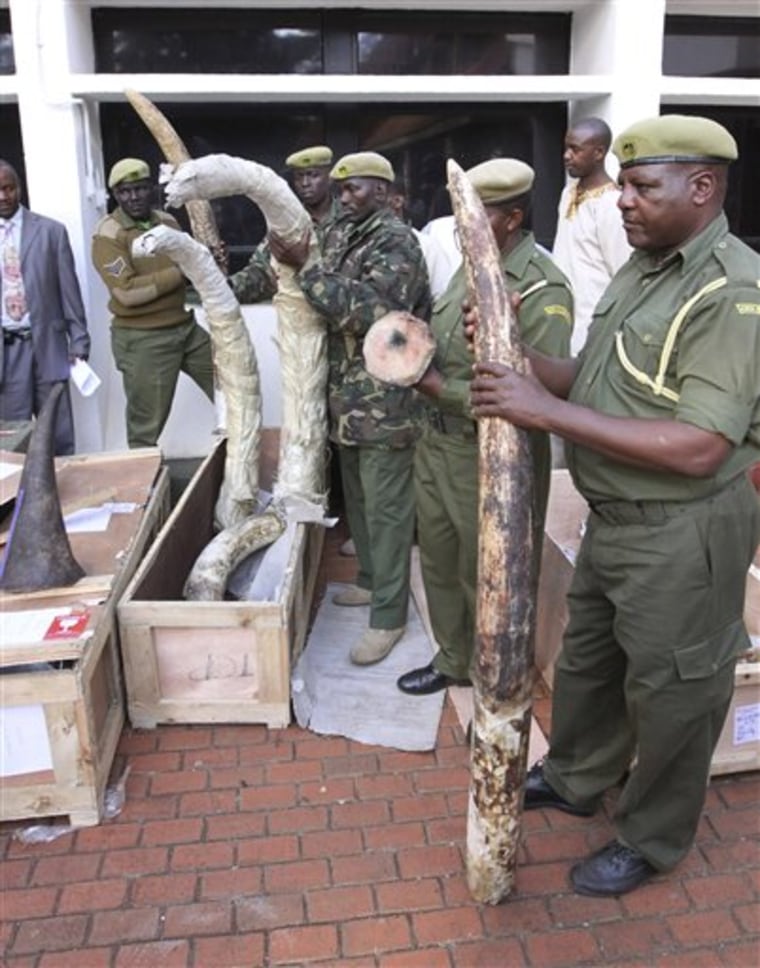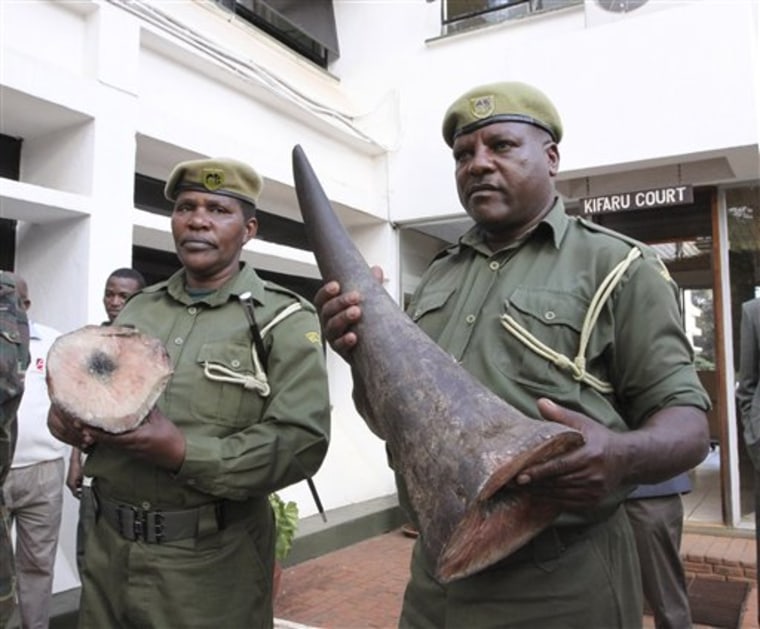Kenya seized more than 660 pounds of illegal ivory and black rhinoceros horn — some of it still bloody — on a cargo plane headed to Asia on Tuesday, wildlife officials said.
The blood on some of the 16 elephant tusks and two rhino horns suggested the animals had been killed recently, said Patrick Omondi of the biodiversity and research division of the Kenya Wildlife Service.
The contraband was hidden in wooden boxes shaped like coffins.
The flight originated in Mozambique and stopped in Nairobi en route to Thailand and finally Laos. It was not clear where the items came from; Omondi said they could have been smuggled into Mozambique from Tanzania or South Africa.

Poaching elephants and black rhinos is illegal.
The elephant populations of many African countries were being decimated until the U.N. Convention on International Trade in Endangered Species, or CITES, banned the ivory trade in 1989. Since then the elephant population of Kenya, for example, has grown from 16,000 to 27,000. But that is far fewer than the estimated 167,000 elephants that lived in Kenya in 1973.
The black rhino is only found in eastern and southern Africa. Rampant poaching decimated the black rhino population from a high of 65,000 across Africa in the 1970s. Southern Africa now has a population of 3,600 black rhinos.
In a report last year, CITES staff noted that rhino "populations in the Democratic Republic of the Congo, India, Mozambique, Nepal, South Africa and Zimbabwe, are all suffering from poaching.
"The situation is so critical in the Democratic Republic of the Congo that scientists fear the population may have been wiped out. Illegal trade in rhinoceros horn appears to be a cause of major concern. It includes fraudulent applications for CITES documents, abuse of legal trophy hunting and the use of couriers smuggling horns from southern Africa to Far East Asia."
But some countries have done little to enforce the ban on elephant tusks and rhino horns.
Last month, a wildlife tracking group reported that Thailand's government has failed to crack down on one of the world's largest markets of illegal ivory, allowing vendors to openly sell products that come from African elephants.
The group TRAFFIC said that judging by recent seizures of ivory imports and exports and several surveys it has done since 2006, Thailand has surpassed traditional hotspots like Japan and China.
